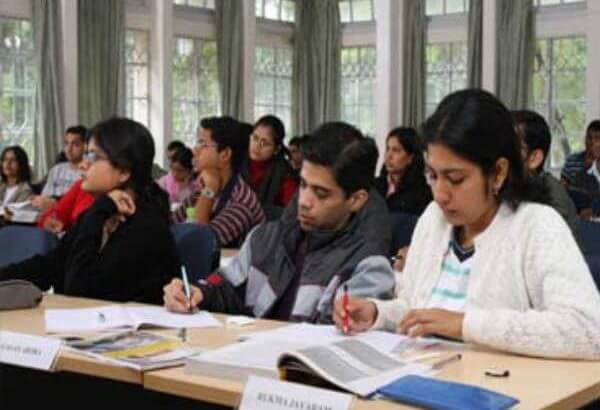Asia/India/16 de Septiembre de 2016/Fuente: The New Indian Express
RESUMEN: India no tendrá la educación universal secundaria superior (que abarca el grupo de edad de 14-17 años y 9 de la norma 12) hasta 2085, más de medio siglo de retraso, según el Informe de Seguimiento de la Educación Global 2016 por la Unesco. Esto tiene que ponerse en relación con las recientes mejoras en la educación en la India, más notablemente que ha habido un aumento general de tasa bruta de matrícula (GER, o la inscripción del estudiante como una proporción del grupo de edad elegible correspondiente en un año determinado) en casi todas las nivel de educación como de 2013-14. La disparidad de género en la educación se ha abordado en gran medida, y la matrícula de niñas en la educación superior aumentó de 39 por ciento en 2007 al 46 por ciento en 2014.Sin embargo, todavía hay gran disparidad en la consecución de las competencias básicas, como la lectura y las matemáticas, donde ha habido una disminución en los resultados del aprendizaje, como se destaca en el informe de la Unesco.
India will not have universal upper secondary education (covering the age group 14-17 years and 9th to 12th standard) till 2085, over half a century late, according to the Global Education Monitoring Report 2016 by Unesco.
This has to be viewed against the recent improvements in education in India, most notably that there has been an overall increase in gross enrolment ratio (GER, or student enrolment as a proportion of the corresponding eligible age group in a given year) at almost every level of education as of 2013-14.
Gender disparity in schooling has been largely addressed, and the enrolment of girls in higher education increased from 39 per cent in 2007 to 46 per cent in 2014.
An increase in single-sex toilets in schools has led to an increase in the enrolment of adolescent girls and female teachers, the Unesco study shows.
However, there is still large disparity in achievement of basic skills, such as reading and math, where there has been a decline in learning outcomes, as highlighted in the Unesco report.
Absenteeism among teachers remains a problem. As many as 25 per cent teachers in primary schools remain absent from work, and only 50 per cent of those at school are actually engaged in teaching activities, a 2004 World Bank report suggested. Almost 24 per cent teachers were absent during random visits to rural schools, according to a September 2015 study by the University of California.
The government has not established any bonus to incentivise teachers and principals, the Minister of Human Resource Development informed the Lok Sabha in April 2016.
E-pathshala, launched in 2015 and aimed at promoting e-learning through e-resources like textbooks, audio and video material, was among the steps taken to tackle the shortage of good teachers, the minister said.
Stunting too is a problem. As many as 39 per cent, or 61.8 million, Indian children who are five or younger are stunted, as IndiaSpend reported in July. This is 15 per cent higher than the global average.
In terms of educational achievement, studies show that stunting at age two leads to children completing one year less of school. Those stunted before age five achieve less schooling and lower test performances.
Another sustainable development goal that India will miss is to have only 100 million children stunted in 2025.
The current trends suggest that there will be 127 million children stunted in that year. A major problem that is preventing stunting is lack of global and local funding, as IndiaSpend reported earlier.
Fuente: http://www.newindianexpress.com/nation/India-to-miss-target-for-universal-upper-secondary-education-by-50-Years/2016/09/14/article3620734.ece
Fuente de la imagen: http://www.oneindia.com/india/india-miss-target-universal-upper-secondary-education-50-years-2208634.html








 Users Today : 7
Users Today : 7 Total Users : 35460216
Total Users : 35460216 Views Today : 10
Views Today : 10 Total views : 3418905
Total views : 3418905